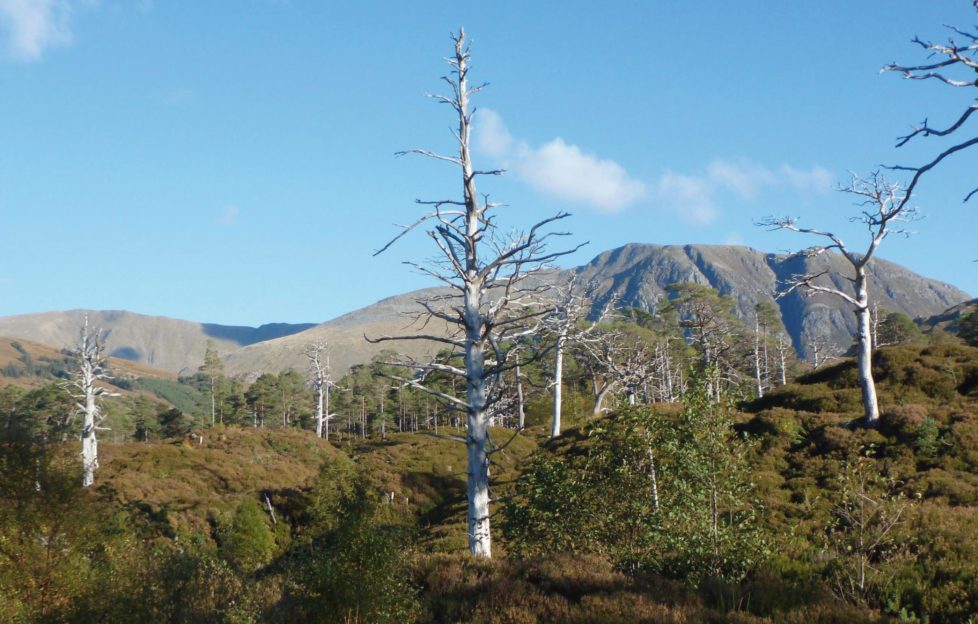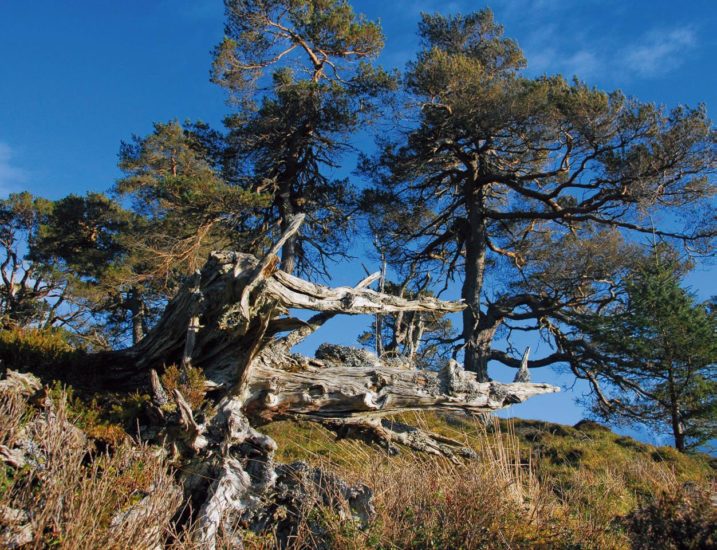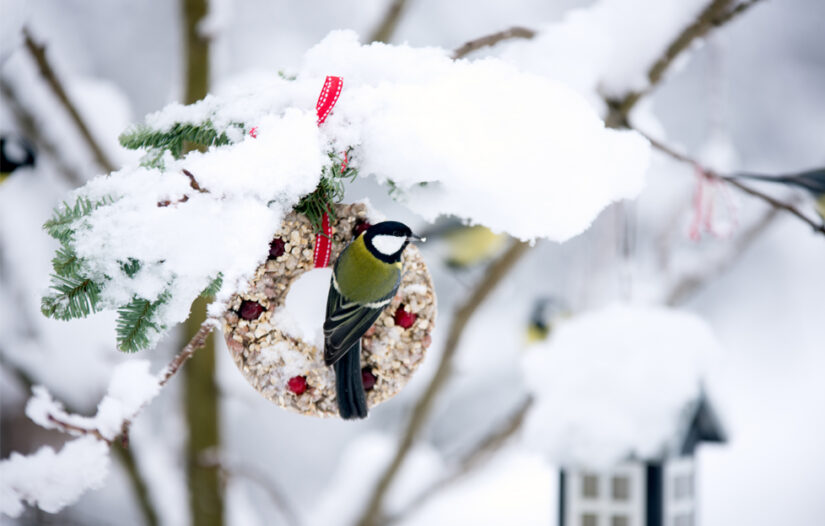
National Tree Week runs from November 23 – December 1, 2019.
To mark the UK’s largest tree celebration, which heralds the start of the winter planting season, we’ve decided to share this piece on rewilding charity Trees For Life, written for us by renowned nature writer Polly Pullar.
The article was originally published in the March 23 issue of “The People’s Friend”.
Until relatively recently, many of Scotland’s important native Caledonian pine forests were at the very end of their lives.
Due to the pressures of severe overgrazing, they had no chance whatsoever for natural regeneration.
Unfortunately, in some areas this still remains the case.
People call these dying woodlands “geriatric”. Numerous pinewoods have vanished altogether, and with their demise comes that of the numerous vital species associated with them.
Many are unique, integral components of an efficiently functioning arboreal ecology.
The wild mountainous regions of Scotland that we have become accustomed to seeing, and consider beautiful, are actually sad, impoverished landscapes where few living things survive.
They would once have been richly cloaked in lush trees. They were once the domain of the lynx, boar, bear, beaver and wolf. Once, we had an ecosystem in balance.
What we have become accustomed to viewing is, in fact, an ecological desert that has led to a catastrophic collapse of our ecosystems.
Over-inflated numbers of deer and sheep over the last few centuries have led to this situation. Though we may not appreciate it, lack of native woodland is detrimental to all life, including us.
There is now a swiftly growing network of informed individuals keen to redress the balance. People who know and understand the vital importance of restoring forest habitats.
Trees For Life
During an international conference at Findhorn in 1986, Alan Watson Featherstone – a visionary with a passion for trees and a great understanding of the natural world – made a dramatic commitment to restore the great forests of the north-west.
Thirty-three years later, the work he began in lonely Glen Affric – and the early partnership he forged with Forestry Commission Scotland – has led to Trees For Life becoming one of the most important conservation charities in the British Isles.
Scots pine forests, with their long list of associated flora and fauna, are now beginning to find their feet once more.
In 2008, Trees for Life bought the 4,000-hectare Dundreggan Estate at Glenmoriston. An ambitious programme of ecological restoration began immediately.
It’s a costly business.
Where natural regeneration of woodland is impractical, thousands of young trees are planted behind expensive deer fences.
Deer numbers across the estate have to be strictly regulated, requiring the services of a professional stalker.
Though this is a 200-year vision, Dundreggan is already starting to change.
Young trees, unimpeded by the voracious mouths of grazers, are beginning their impressive dance up the mountain slopes close to Loch Ness.
And the benefits are tangible.
As work to restore woodlands continues, many other lost species are gradually returning.
Plants, fungi and invertebrates – as well as birds and small mammals – have been recorded.
Since 2012, Dundreggan has also played host to a specialist tree nursery.
Currently, volunteers collect local seed, often from remote and difficult locations. Each year, some 60,000 trees grow.
These include many species that are notoriously tricky to propagate, such as aspen.
The volunteers also nurture from seed and plant out species of wildflower associated with pine woodlands, such as twinflower and small cow-wheat.

Photograph by Polly Pullar.
It’s just scrub
“It’s just scrub” is a comment heard all too frequently, particularly when clearing for development is underway.
Classifying woodland as “scrub” seems to allow developers immediately to negate any impact their work might have on biodiversity in the area.
But people frequently misinterpret and misuse the word “scrub”.
Rather than something worthless, “scrub” literally means “small trees and shrubs”. It provides a rich habitat for a wide range of species.
Mountain scrub, growing high up on the hills, is a vitally important and increasingly rare environment. It has the ability to provide the missing link between the woodlands of the glens.
Again, due to extreme grazing pressures, this valuable asset has almost entirely vanished. Able to withstand extremes of climate, strong wind and savage cold, the wee trees associated with “montane” scrub include dwarf juniper, downy, woolly and mountain willow.
These bonsai-sized trees frequently become contorted and wind-hewn, yet their presence and root systems have the ability to stabilise entire hillsides, whilst helping to mitigate against both drought and flood.
They also provide vital shelter and a natural corridor rich in insects, birds and small mammals, in turn making food for numerous other species large and small – including the golden eagle.
In the spring of this year, Trees for Life will begin exciting plans to plant some 10,000 rare montane species, all grown from seed collected from vertiginous elevations.
The aim is to recolonise an area of Beinn Bhan at Dundreggan, some 500 metres above sea level. Further suitable seed and cuttings will be needed to ensure that the new forest environment of “wee trees” is strong enough to withstand the vagaries of the elements.
Priceless rewards
This latest Trees For Life venture will have priceless rewards.
Having a burgeoning forest of wind-sculpted, waist-high trees fringing the regenerating woods of Caledonia will benefit many species.
For example, the rare ring ouzel, the mountain blackbird, the mountain hare and black grouse will now be able to thrive once more.
It’s now up to us to ensure we restore vibrantly healthy woodlands.
This will leave a richer natural legacy than the one we have inherited from our forebears.
Trees For Life is one of the country’s most proactive conservation charities.
With our support, it can continue to work towards that wonderful goal.
It is a goal that reaps nothing but benefits, whilst also nurturing our beleaguered Earth.
For more on National Tree Week, click here.
Polly recently gave us some advice on snapping better pictures when we’re out and about. Read her article here.
She also recently lent a hand to our Marion, who had heard some strange noises coming from her walls . . . Read more about that mystery here.




